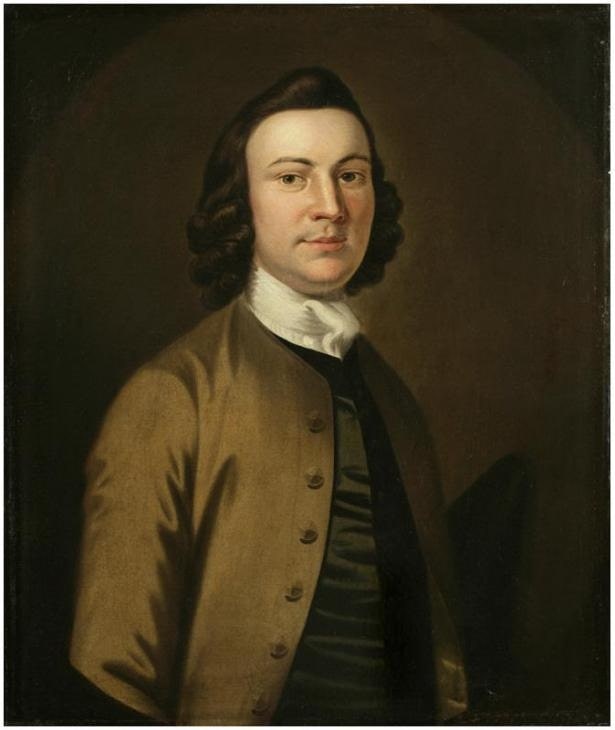Contents

Contents
Quick facts
- Born: 1726 in New York, New York.
- William Alexander married Sarah Livingston in 1748.
- She was the sister of Philip Livingston, signer of the Declaration of Independence, and of William Livingston, the first Governor of New Jersey and signer of the U.S. Constitution.
- In 1761 Alexander began using the title
Lord Stirling,
based on his claim of being the nearest heir to the 5th Earl of Stirling; his wife becomesLady Stirling.
- At the Battle of Long Island (Aug-1776), Stirling lead the 1st Maryland Regiment in repeated attacks against a superior British force. Outnumbered 25 to one, the brigade was overwhelmed and took heavy casualties; Stirling was captured.
- However, Stirling’s brigade had courageously repelled the British just long enough so that the main body of American troops were able to escape to defensive positions at Brooklyn Heights.
- During the winter of 1777 – 78, Alexander played a key role in exposing the
Conway Cabal,
a conspiracy by Thomas Conway and others to unseat Washington as the Commander-in-Chief of the Continental Army. - Always a heavy drinker, and afflicted with gout and rheumatism, Stirling died in January 1783 at Albany, NY — just several months before the Treaty of Paris (3-Sep-1783) formally ended the war.
- Not well known today, but ranking third or fourth behind the Commander-in-Chief throughout most of the war, Lord Stirling was one of Washington’s most trusted generals.
- In 1965, the Lord Stirling School was established in Basking Ridge, NJ, in a farmhouse that was part of the original estate of Lord Stirling. Its mission is to help underperforming students achieve greater success.
- Died: 15 January 1783 in Albany, New York.
- Buried in the churchyard at Trinity Church, New York.
Biography
William Alexander, known as Lord Stirling, was a Continental Army general. Born in New York City in 1726, he was the son of James Alexander (1690 – 1756), at one time the surveyor general of New York and New Jersey and a noted colonial lawyer. He was well educated, and like his father he became an excellent mathematician and astronomer.
At the beginning of the French and Indian War, Alexander served first as commissary and then as aide-de-camp to Massachusetts colonial Governor William Shirley. In 1756 he accompanied Shirley to England, where he was persuaded to claim the earldom of Stirling. In 1759 an Edinburgh jury declared him to be the nearest heir to the last Earl of Stirling; the House of Lords, however, resolved that he had not proved his claim and forbade him to use the title.
Nevertheless, when Alexander returned to America in 1761 he adopted the title Lord Stirling. Settling at Basking Ridge, New Jersey, with his wife, Sarah Livingston Alexander (married 1748), he was a man of wealth and social prominence, had a fine mansion, was a member of the New Jersey Provincial Council, as well as surveyor general of the colony.
A strong advocate for the colonial cause at the outbreak of the Revolutionary War, in November 1775 he was appointed colonel of the first regiment of the New Jersey militia — outfitting the soldiers at his own expense. The following January he distinguished himself by the capture of an armed British transport in New York Bay. In March he became brigadier general, and for some time was in command at New York and supervised the fortifications of the city and harbor.
At the Battle of Long Island (Aug-1776), he held off the British troops long enough to enable Washington to evacuate the remainder of his forces. He was taken prisoner, but was soon afterward exchanged. In February 1777 he was appointed major general.
He participated in the battles of Trenton, Princeton, Brandywine, and Germantown; he especially distinguished himself at Monmouth. He took an active part in exposing the Conway Cabal, presided over the court-martial of General Charles Lee (Jul-1778), and to an unusual degree enjoyed the confidence of Washington. In October 1781 he took command of the northern department at Albany to check an expected invasion from Canada.
Often overindulging in food and drink, Lord Stirling died from gout at Albany in January 1783. Brave and intelligent, energetic yet cautious, he was good military engineer and organizer, and one of Washington’s best generals.


